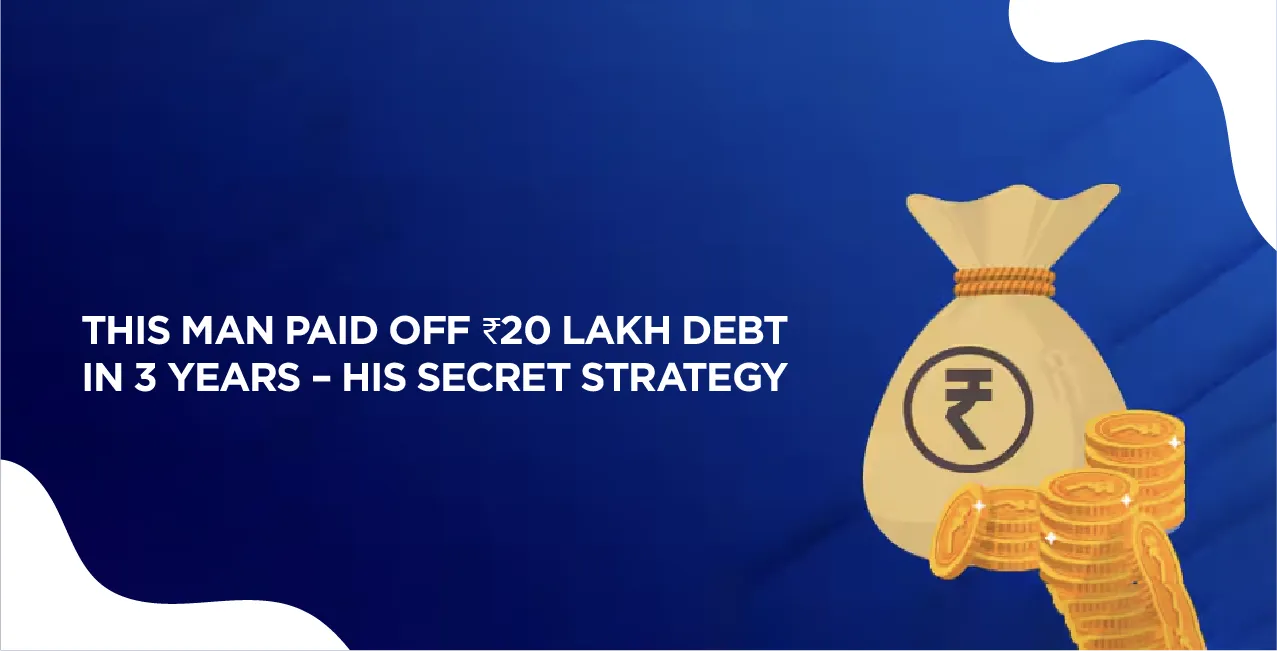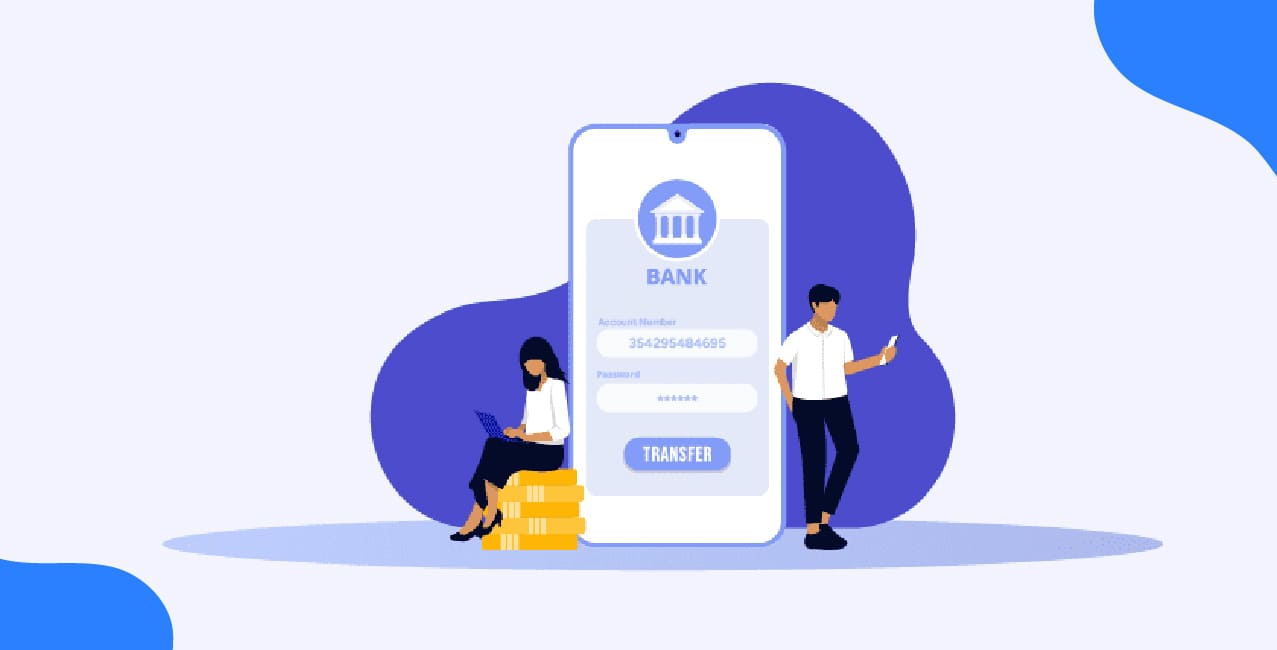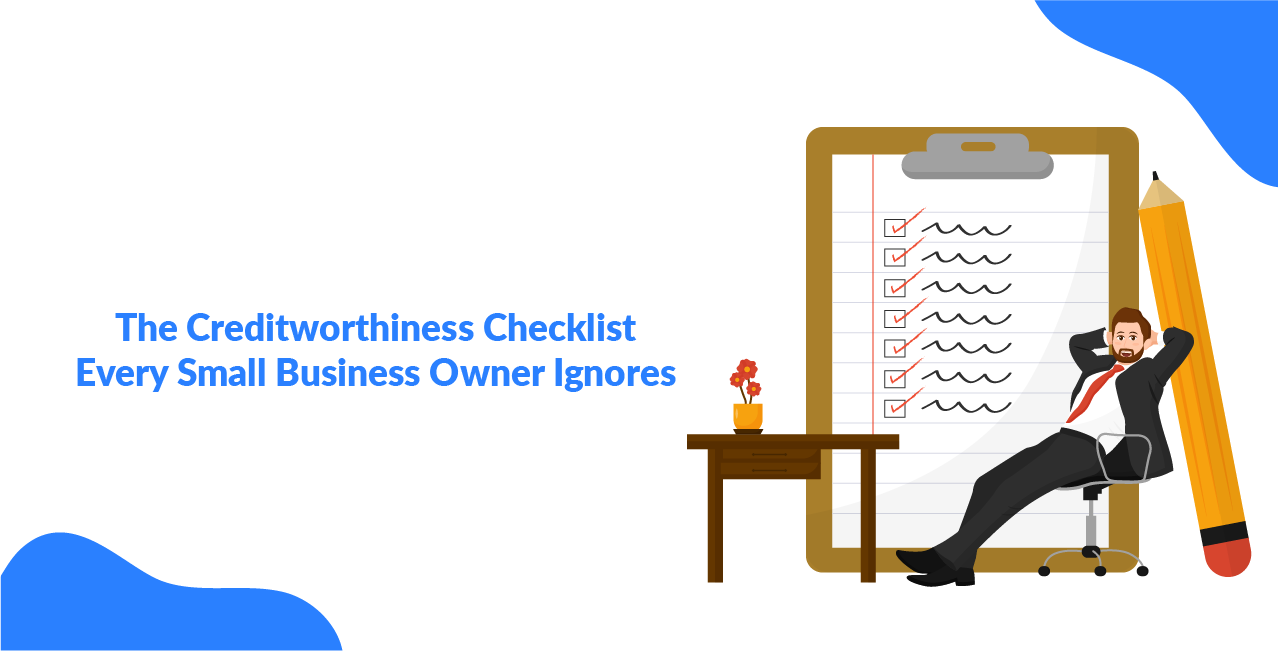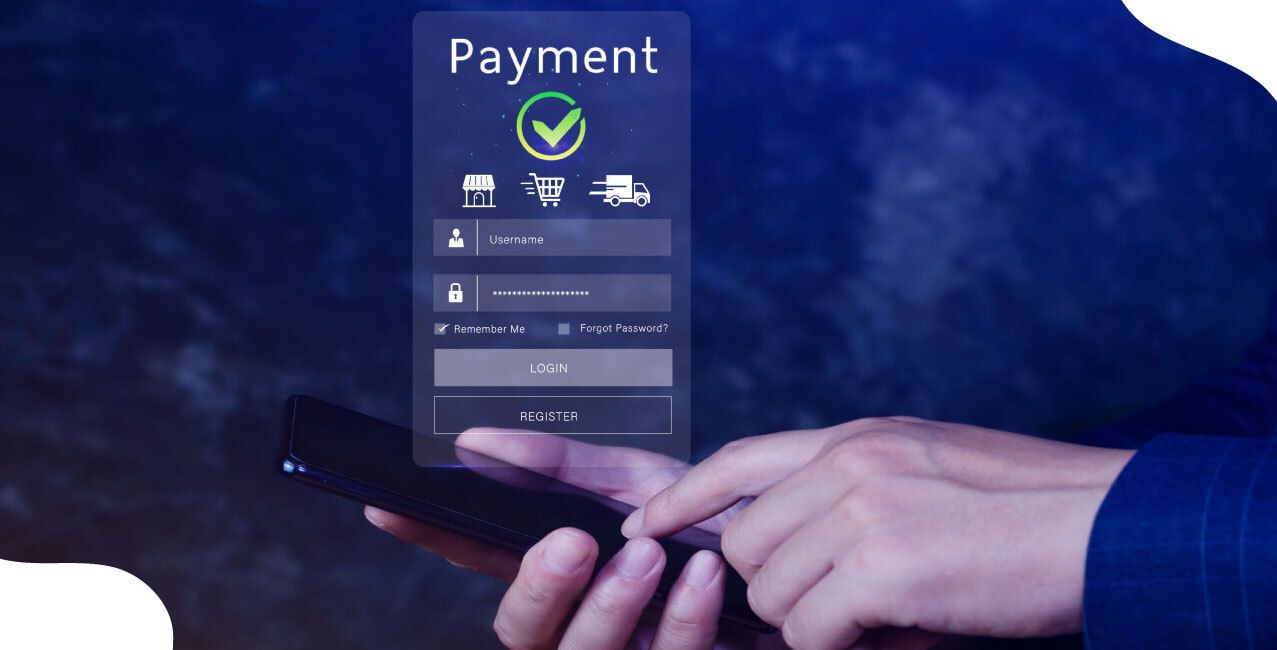
Author
LoansJagat Team
Read Time
8 Min
22 Apr 2025
This Man Paid Off ₹20 Lakh Debt in 3 Years – His Secret Strategy
Rahul, a 32-year-old marketing executive from Gurugram, owed ₹20,00,000 in debt. He swiped his credit card for ₹50,000 on gadgets, spent ₹1,50,000 on vacations, and took a ₹10,00,000 loan to invest in a friend’s failed business. Monthly expenses, consisting of his ₹40,000 car EMI payments and ₹10,000 dinner bills, gobbled up all his salary.
One evening, he verified his bank balance to find that there was just ₹2000 left for the month. That instant jolted him. He decided to take charge. For his ₹1,00,000 salary, he established a rigid "60-30-10 Rule" for his expenditures.
₹60,000 (60%) to loans
₹30,000 (30%) to needs
₹10,000 (10%) to savings
He sold his car, bought a scooter worth ₹25,000, and limited his monthly non-discretionary expenses to ₹20,000.
Rahul expanded his monthly earnings through freelance work, which amounted to ₹25,000 per month, to settle his debt earlier. He also earned an extra ₹10,000 per month by leasing out one of his rooms.
Rahul settled the whole ₹20,00,000 debt within 3 years through strict management of his finances.
On the day he made his final loan payment, he walked into a showroom—not to window-shop but to book his first wholly owned car, free from EMIs. Holding the booking receipt in his hands made him experience financial freedom for the first time in years.
Debt Ka Darr: How It All Started
Rahul, like the common middle-class Indian, had grand illusions to begin with, but ended up drowning in debt. It started with a ₹40,000 home loan EMI, followed by a ₹20,000 personal loan for a crisis, and the next thing he knew, his ₹10,000 credit card dues piled up.
His ₹1,00,000 monthly salary seemed like a wedding guest, taken for granted and mostly gone. Having already spent ₹70,000 in EMIs, he was left with just ₹30,000 to spend on rent, food, and utilities.
One evening, while scanning his bank app, reality smacked him in the face like a Delhi traffic congestion—"Aise chalta raha toh savings bas naam ki reh jayegi!"
That was his wake-up call.
"No More EMI Tension": Rahul’s Game-Changing Plan
Rather than panic, Rahul got control and charted a sound repayment plan. He used the debt snowball approach, eliminating the smaller loans first to create momentum.
The Strategy:
- Included all Liabilities: Home loan, personal loan, credit card bills, etc.
- Prioritised Payoffs: Ranked them by the amount owed and rates of interest.
- Prioritised Paying Off Smaller Loans: Focused on repaying smaller debts through full payments while continuing minimum payments on the remaining obligations.
- Reinvested Saved EMI Amounts: The funds saved through reduced EMI payments were reinvested to pay off more significant loans beforehand.
Rahul's Use of This Strategy (With Numerical Example)
Loan Type | Outstanding Amount | EMI | Interest Rate | Repayment Strategy |
Credit Card | ₹50,000 | ₹5,000 | 36% | Paid out first (smallest loan, highest interest) |
Personal Loan | ₹2,00,000 | ₹15,000 | 18% | Paid next with the freed-up ₹5,000 from the credit card |
₹5,00,000 | ₹20,000 | 12% | Paid out third with additional funds from the personal loan | |
Medical Loan | ₹2,50,000 | ₹18,000 | 14% | Paid after the car loan was repaid |
Home Loan | ₹10,00,000 | ₹40,000 | 8% | Last in priority: additional EMI paid off with savings, and the money freed up. |
Throughout 3 years, Rahul managed to pay off ₹20,00,000 of debt, which made him debt-free.
Side Hustle = Extra Paisa! The Power of Multiple Incomes
One of the brightest things Rahul did was not just live off his salary. He realised that more money = debt paid off quicker and acted!
What He Did
- He started freelancing as an IT consultant on weekends to earn an additional ₹25000 monthly income in his first month.
- Through his YouTube channel, he began sharing coding tutorials, which resulted in monthly earnings of ₹50,000.
- Rahul generated passive income by renting out his one-room apartment, earning ₹30,000 each month.
The Growth:
Timeframe | Side Hustle Income (₹/month) |
Month 1 | ₹5,000 |
Month 6 | ₹50,000 |
Month 12 | ₹2,00,000 |
Expense Cuts That Hurt but Worked!
"Bhai, Netflix nahi, free YouTube dekh!" – Rahul understood that each rupee saved was a rupee earned in his journey to becoming debt-free. He entered a hardcore cost-cutting mode, reducing frivolous expenses while maintaining a good lifestyle.
Significant Changes & Savings Breakdown:
No More Luxury Coffee & Dining Out
- Rahul was spending ₹150 a day on high-end coffee and fast bites, totalling ₹4,500 a month.
- Weekend restaurant visits cost him another ₹5,000 every month.
- What He Did: Cut down on restaurant visits and homemade tea, saving a total of ₹9,500 every month.
Public Transport Over Uber
- He used to take cabs earlier, spending ₹6,000 to ₹8,000 every month on Uber and Ola.
- What He Did: Purchased a metro card and took public transport instead, bringing this down to ₹1,500 every month.
- Total Savings: ₹5,500 to ₹6,500 every month.
No Impulse Online Shopping
- Rahul used to spend lavishly on flash sales and gadget upgrades when not needed, at least ₹10,000 every month.
- What He Did:
- Removed shopping apps such as Amazon and Myntra.
- Applied a 30-day rule—if he still required something after 30 days, then he'd purchase it.
- Began tracking all spending in an Excel sheet.
Read More – How This 25-Year-Old Paid Off ₹10 Lakh Debt in Just 1 Year—Her Secret Strategy
- Removed shopping apps such as Amazon and Myntra.
- Total savings: ₹8,000 to ₹10,000 monthly.
Intelligent Entertainment Options
- He previously had several OTT subscriptions—Netflix, Prime, Hotstar—at ₹1,500 every month.
- What He Did:
- Switched to free YouTube and one common OTT plan with friends.
- Enjoyed entertainment from free things like reading and evening walks.
- Switched to free YouTube and one common OTT plan with friends.
- Total Savings: ₹1,000 per month.
Total Monthly Savings: ₹25,000 to ₹27,000
Rahul didn't merely save money—he invested every saved rupee towards additional EMI payments, which made him debt-free a year ahead of schedule.
"Credit Card Ke Jaal Se Bachna Hai Toh Ye Karo"
Rahul was shelling out 40% interest on his credit card payments—a costly blunder that was draining his finances. He realised that he needed to act quickly to get out of this debt trap.
How Rahul Fixed His Credit Card Debt (Numerical Breakdown)?
Issue | Before (Bad Habits) | After (Smart Strategy) | Savings |
Interest on credit card dues | ₹1,50,000 at 40% interest | Converted to personal loan at 12% interest | Saved ₹42,000 annually on interest |
Credit card usage | Spent ₹30,000/month on shopping, food deliveries, and gadgets | Used only for essentials like bills, fuel, and groceries (₹10,000/month) | Reduced unnecessary spending by ₹20,000/month |
Bill payments | Paid only minimum due of ₹5,000/month, leading to more interest | Paid the full outstanding amount every month | Avoided ₹10,000+ in annual interest |
Total Monthly Burden | ₹12,000 to ₹15,000 in interest and minimum dues | ₹10,000 usage, paid in full, no extra interest | ₹15,000+ saved monthly |
With these disciplined steps, he escaped the high-interest trap, saved lakhs in the long term, and gained control over his finances!
"Ek Saath Sab Loan Khatam!" - The Debt Consolidation Move
Debt consolidation was Rahul's Brahmastra against his financial struggles. Rather than maintaining too many high-interest loans, he borrowed a low-interest personal loan to settle expensive debts such as credit cards.
Before Debt Consolidation (Multiple High-Interest Loans)
Debt Type | Amount | Interest Rate | EMI (₹/Month) |
Credit Card Debt | ₹1,50,000 | 40% | ₹5,000 |
Personal Loan 1 | ₹2,00,000 | 18% | ₹7,500 |
Car Loan | ₹5,00,000 | 12% | ₹20,000 |
Total Burden | ₹8,50,000 | Varied | ₹32,500 |
After Debt Consolidation (One Low-Interest Loan)
Debt Type | Amount | Interest Rate | EMI (₹/Month) |
Consolidated Personal Loan | ₹8,50,000 | 12% (Fixed) | ₹25,000 |
Total Burden | ₹8,50,000 | 12% | ₹25,000 |
Why This Worked for Rahul:
- Reduced EMI: Monthly installment lowered from ₹32,500 to ₹25,000.
- Lower Interest Rate: No more high-interest 40% credit card bills.
- Simpler Management: Single loan, single EMI, no fragmented payments.
Rahul saved lakhs in interest and became debt-free sooner by consolidating his loans!
Investing While Repaying: Smart Move or Not?
Rahul knew that halting investments entirely was not the best solution. Rather than withdrawing funds from his SIPs, Rahul opted to curtail the size of the investments but pay the debt aggressively. By doing this, he continued to have liquidity but still let his money grow.
Rahul's Debt vs. Investment Strategy (Numerical Breakdown)
Financial Decision | Before | After (Optimized Strategy) | Benefit |
SIP Investment | ₹15,000/month | Reduced to ₹5,000/month | Maintained market exposure while freeing ₹10,000 for loan repayments |
Debt Interest Rate | 12% to 40% (varied loans) | Focused on clearing high-interest loans first | Saved ₹50,000+ in annual interest |
Loan Repayment Speed | 5+ years | Cleared in 3 years | Became debt-free 2 years earlier |
Emergency Fund | ₹30,000 | Increased to ₹1,00,000 | Ensured financial security in case of unexpected expenses |
- Rahul did not entirely stop investing—he reduced his SIPs instead, ensuring long-term growth.
- He prioritised high-interest debt while keeping some investments running.
- His plan enabled him to pay off debt quickly without compromising his financial future.
Avoiding Lifestyle Inflation: No Showoff!
Even after receiving multiple salary hikes, Rahul avoided the temptation of unnecessary upgrades. No high-end gadgets, no luxury vacations—he remained focused on his dream of financial freedom.
His Formula for Financial Discipline:
- Higher savings percentage with a salary increase
- When his salary was ₹1,00,000/month, he saved ₹10,000 (10%).
- When it rose to ₹1,50,000/month, he saved ₹50,000 (33%) rather than upgrading his lifestyle.
- By the time he was earning ₹2,00,000/month, he was saving ₹1,00,000 (50%).
- When his salary was ₹1,00,000/month, he saved ₹10,000 (10%).
Avoided unnecessary luxury Purchases
- He skipped purchasing the new ₹1,20,000 iPhone, instead using his old one.
- He didn't buy a ₹15,00,000 car, kept travelling by public transport, and drove the same car.
Maintained The Same Budget
- He kept spending ₹30,000/month on essentials, even when he doubled his income.
- Any additional income went directly into paying off debt and investments.
Rahul's self-control helped him to pay off his ₹20 lakh debt earlier as well as accumulate ₹10 lakh in savings by the third year.
Conclusion
Rahul's story confirms that it is possible to escape debt with discipline and intelligent financial management. Rahul approached his ₹20 lakh debt by adhering to a rigorous 60-30-10 rule—60% of his earnings for paying off debt, 30% for essentials, and 10% for saving.
To accelerate the process, he eliminated unnecessary spending—no fancy coffee, no taxi rides, and no impulse purchases. Rather than living off his salary alone, he diversified income streams through freelancing, YouTube tutorials, and rental income, lifting his earnings from ₹5,000/month to ₹2,00,000/month.
Instead of paying multiple high-interest loans, he consolidated them into a single low-interest loan, saving himself thousands in interest. Even after paying off his debt, he continued living on a modest budget while growing his savings.
The day he cleared his last EMI, Rahul booked his first car—paid in full. His story is a blueprint for financial independence.
FAQs
How do I pay off debt in India?
The Debt Snowball (from smallest to largest) and Debt Avalanche (from highest to lowest interest) methods are the most effective.
Is debt consolidation worthwhile?
Yes, if it reduces your interest rates and streamlines repayment.
Should I quit investing while I'm paying off debt?
No, cut investments but not entirely, particularly SIPs.
How can I earn more to repay debt sooner?
Freelancing, part-time work, investing in assets such as rental properties, and passive income streams can assist.
What are the most common mistakes to avoid when paying off debt?
Paying the minimum on credit cards.
Borrowing new loans to repay old ones.
Not budgeting and avoiding unnecessary expenses.
About the Author

LoansJagat Team
‘Simplify Finance for Everyone.’ This is the common goal of our team, as we try to explain any topic with relatable examples. From personal to business finance, managing EMIs to becoming debt-free, we do extensive research on each and every parameter, so you don’t have to. Scroll up and have a look at what 15+ years of experience in the BFSI sector looks like.

Quick Apply Loan
Subscribe Now
Related Blog Post


